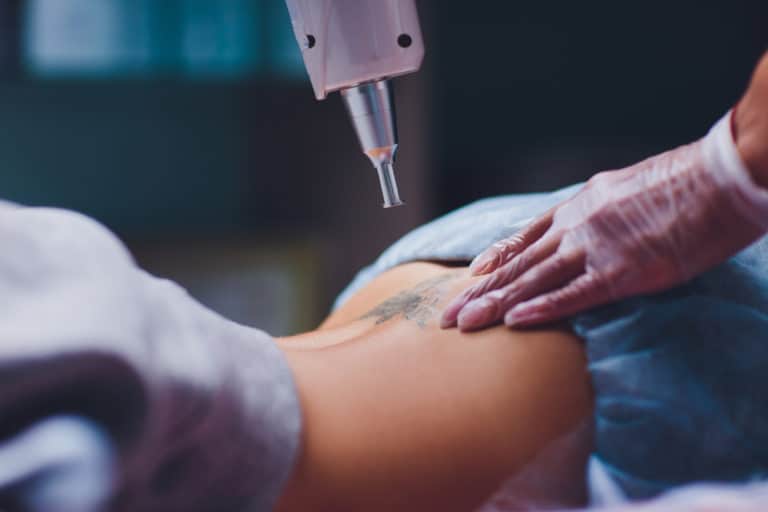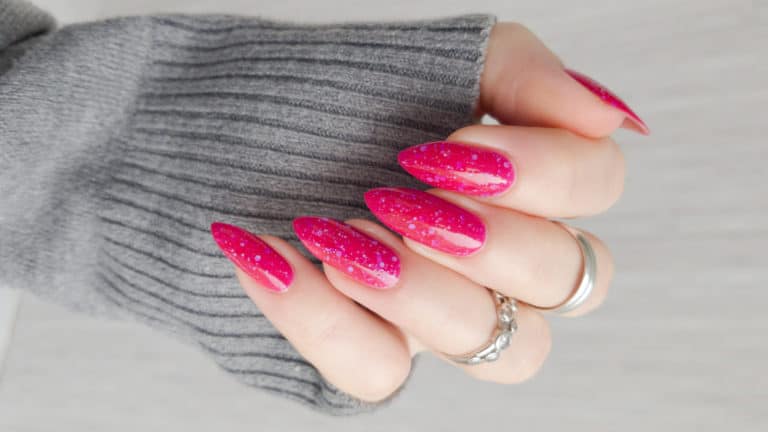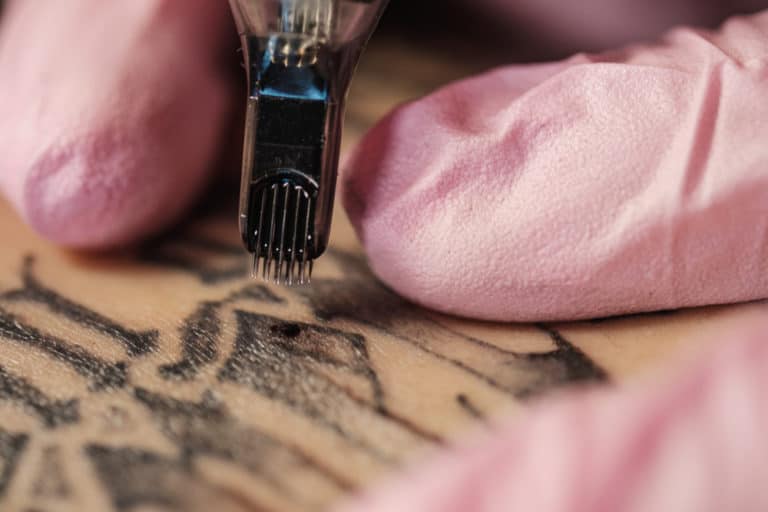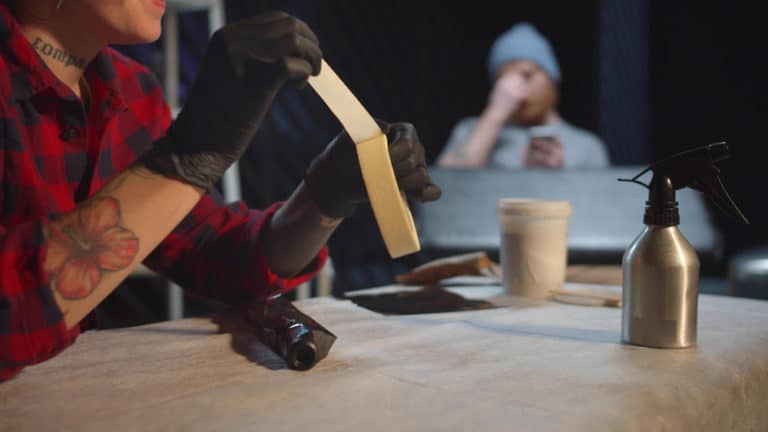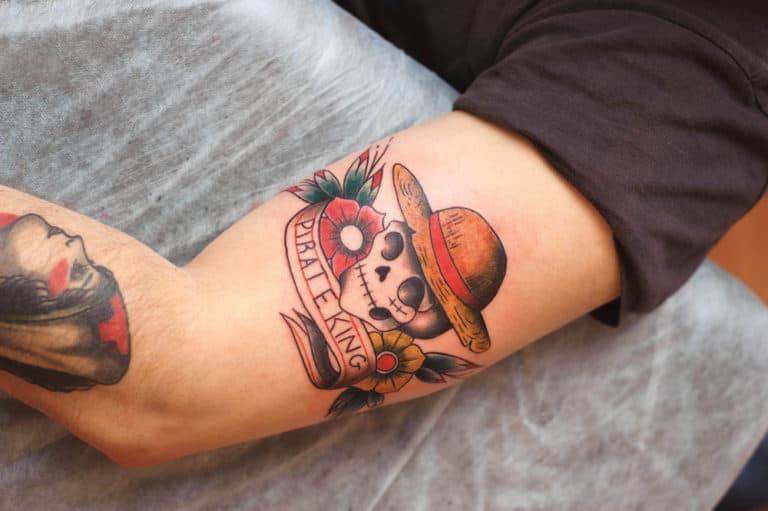What Happens To Tattoos When You Die?
Anybody with ink has heard an abundance of unasked concern-trolling comments. People warn you that it will look hideous when you are older, and you’ll regret it. But with decent sun protection, quality ink, and excellent artistry, many older people still love their tattoos. But what happens to our ink after we’ve taken our final breath?
When a person dies, their tattoos will suffer the same fate as their skin. This means if the body degrades, the tattoos will too. However, a mummified body will retain the tattoos in the same quality as the preserved skin. Also, there are services that can preserve the deceased’s ink.
When you die, the fate of your tattoos depends on what happens to your body. If you have arranged for cremation, that ink will fade into the past faster than sunburn could achieve. Your tattoos won’t fare much better if you are fossilized, either. But there are ways to preserve them or, if a survivor desires, even make a tattoo out of you.
Proof Tattoos Can Live On After Death
Tattoos live with their human host thanks to the macrophages in the immune system. This prevents the ink from being filtered out of the dermis. When we die, our immune system ceases, but so does everything else. Thus, any tattoos in the skin will continue on so long as the skin is preserved.
We know this because proof of ancient body art goes beyond what has been found on pottery, paintings, and carvings. Evidence of tattoos had been witnessed thanks to female Egyptian mummies. These people dated back to c. 2000 B.C. Until 1991, they were the earliest examples of tattoos. But that changed with the discovery of the Iceman.
Ötzi the Iceman lived around 5,200 years ago and died up in the European Alps. Unlike the Egyptian mummies, he was not purposely preserved. However, thanks to the climate and conditions of where he died, his body remained intact. With over 50 tattoos on his body, his are the first we’ve seen from the Copper Age.
The tattoos on Ötzi are thought to have been done for therapeutic purposes rather than artistic. This is due to their distribution, corresponding with areas that commonly ache from ailments such as arthritis. The ink is not thought to be sophisticated; simply charcoal rubbed into cuts. Nonetheless, Ötzi is proof tattoos can live beyond our deaths.
Having Your Tattoos Live On After Death
Since we no longer mummify our dead, tattoos generally die as the human body decomposes or is cremated. But that’s no longer true. These days, the artwork on the deceased can be preserved.
It is true we no longer create mummies, however, embalming is still a technique used today. Mortuaries do this to provide grieving families extra time to arrange for the funeral and for any cosmetic work to be done, should survivors wish to have an open casket or viewing of the deceased.
This was the genesis of the National Association For The Preservation Of Skin Art, started by Charles Hamm. With the help of a plastic surgeon, Hamm had some skin removed in order to develop techniques to preserve tattoos. Hence, the organization aims to allow friends and family to preserve pieces of you and your ink.
Now people can contact Save My Ink, owned by father and son duo Michael and Kyle Sherwood. They are embalmers and funeral directors who will work with funeral homes in the US, Canada, and U.K. to help preserve tattoos. The body art is specially preserved and then framed, allowing your tattoos to be displayed long after you have died.
This is not something just anyone can legally do. The survivors must have their local funeral home or crematory contact Save My Ink within 48-72 hours after their loved one has died. Then, a special kit will be dispatched, along with the correct paperwork. Once the artwork has been collected and dispatched, it takes around three months to receive the framed tattoos.
The finished product actually looks much brighter than when last seen on the deceased. This is due to the preservation process and how the ink behaves when the skin is removed from the body.
However, the company will only offer this service for artwork that was done by professional tattoo artists. Those that have used the service report that the process was carried out with dignity.
Having Your Loved One Live On As A Tattoo
Not everyone we love has tattoos to keep. Nor does everyone who has a tattoo sport good art. Some ink is not worth saving. Thus, there are options out there who would like to turn their deceased loved one into a tattoo. It begins by using an organization, such as Cremation Ink, that will infuse the deceased’s ashes with professional grated tattoo ink.
It is legal, provided you don’t do it yourself, and your tattoo artist is following all health and safety regulations. It is also considered safe, but not if you do it yourself. The biggest reasons are the consistency of the ash and its ratio with the ink. If the ash isn’t fine enough or the quantity is wrong, it can cause problems for either the tattooing equipment or you.
A proper establishment offering this service ensures the ashes have been sterilized. Ashes, in themselves, were sterilized by the cremation process. But the handling of them afterward may have caused contaminants. The service will also ensure fragments and minerals that could be problematic are also removed before infusing the ashes with the ink.
Once you have the ink returned, you will still need to find a tattoo artist willing to work with the ink. Many are, but some have reservations. So make sure your artist knows beforehand that you will want this special ink worked into the piece. This is not something to spring on them.
Artist refusal is not necessarily due to moral or ethical objections. Since these tattoos are still relatively new to the scene, experience using the medium is limited. Given the emotional connection the piece will have, artists don’t want to agree to something they are not fully confident they can deliver.
Conclusion
For most of us, our death will mean the end of our tattoos. Few of us are preserved in the way of Ötzi or the Ancient Egyptian royalty. But modern creative solutions are emerging to allow friends and family to preserve our tattoos if desired. We also have the ability to have tattoos made from the ashes of our dearly departed.
Sources
- https://www.bbc.com/news/world-us-canada-48047002
- https://www.livescience.com/61932-why-tattoos-last.html
- https://www.vice.com/en/article/dp547x/a-new-service-wants-to-preserve-your-tattoos-after-you-die-915
- https://www.archaeology.org/issues/107-1311/features/tattoos
- https://www.smithsonianmag.com/history/tattoos-144038580/
- https://www.neptunesociety.com/cremation-information-articles/what-to-do-with-cremation-ashes-tattoo-ink
- https://www.nationalgeographic.com/history/article/tzi-the-iceman-what-we-know-30-years-after-his-discovery


